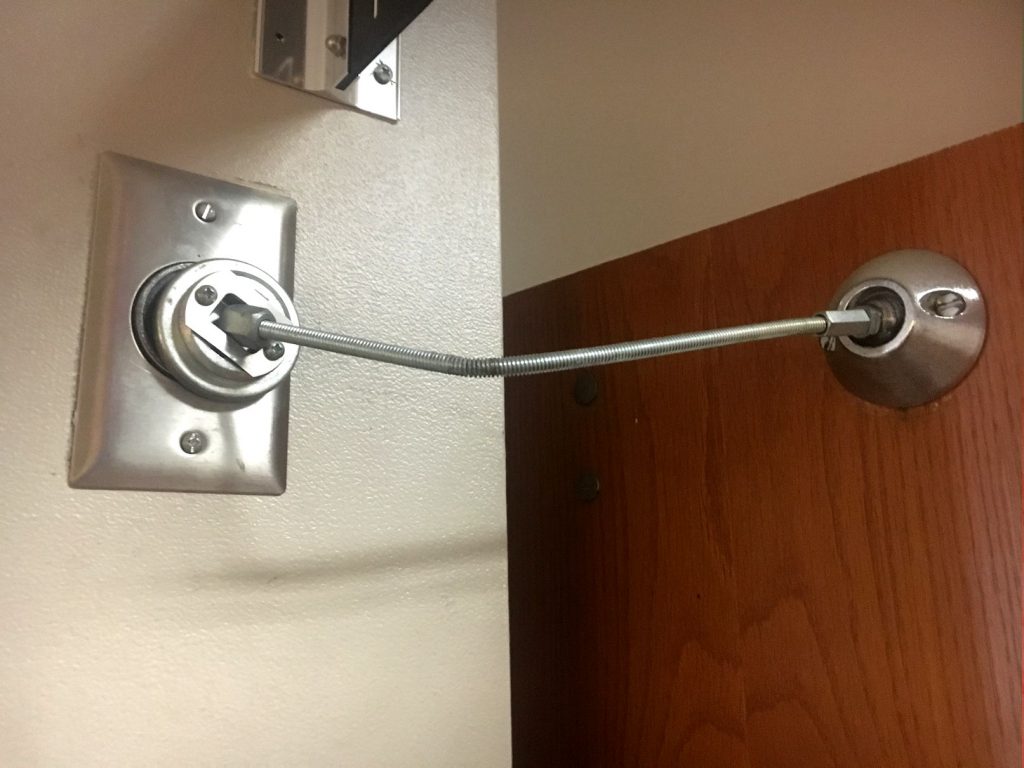Charles Anderson sent me this Fixed-it Friday photo of a creative solution he saw at a university. Is it me or do some of those parts look like they came from the “leftover box” in the lockshop?
You need to login or register to bookmark/favorite this content.







Looks more like the building maintenance crew to me.
This is much more common than you might think. I’ve seen this, and many variations of it, in schools and in hospitals.
Yes, it looks a Flush Bolt extension rod.
Have a safe holiday.
Does it also stick out away from the door when disengaged to prevent scratches on the wood door? Does anyone make a plastic cover for the contact?
I would hope that the parts came from the leftover box in the ELECTRICAL SHOP!
(At least that’s what happens where I work.)
We have this arrangement on several schools. For a variety of reasons the door cannot reach the wall mounted magnet. We have used extensions, all-thread rod or light gauge chain. The fire alarm is initiated, the magnet releases and the door closes and latches. It works.
I’ve actually done that to reach over a heater unit at a state university. I use a copper tube over 1/4 inch allthread and painted it silver. New construction and never an issue. Didn’t hit the punchlist, probably because the architect saw the error in his ways.
Very poorly done IMHO. The better way would have been to move the wall magnet around the corner to the adjacent wall and then mount the armature catch plate to the door so that it properly aligns perpendicular to the wall magnet. Security Door Controls EH Series has a self-aligning catch plate and extension rods are available in various sizes to fill any gap as necessary.
I think you are correct it appears to be the rod from a flush bolt
Necessity is the mother of invention….
sometimes you do what you have to do! is there anything in code says you cant improvise?
The modification wouldn’t comply with the UL listing for the product. I know it’s done all the time but with fire door inspections becoming more common, this type of modification will be picked up.
– Lori
I think it is just a common threaded rod…
Bent all thread rod is a regular item on my punchlists and inspections. All thread is usually equal to Grade 2 material and soft. Once bent, the rod begins to fracture at the root of the thread. It usually won’t last for another bend. See it all the time on critical support of piping, ductwork, conduit, sprinklers and even large pipe racks. If they’re going to do this at all, it should be solid stock.